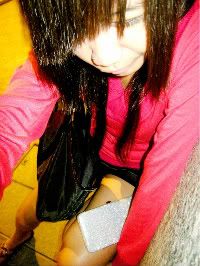
Dear Diary,
History is not my favourite subject and visiting Singapore National Museum never cross my mind until by coincident that I was attracted by the new renovation. It took me more than 3 hours walking into the past of Singapore history aided by the audio visual walkman.
Its so real that the past events were recorded which are found here from the time Sir Stamford Raffles found Singapore to the transformation modern Singapore.One particular section which I am captivated was the Japanese occupation during 1942 to 1945.Our people suffered horrendously without foods and fears.There were narrations of war heroes who were captured and innocently persecuted..There is one heroine I want to share was Elizabeth Choy .

Elizabeth Choy
During the Japanese Occupation, she worked as a canteen operator with her husband at the Mental Hospital which was renamed Miyako Hospital (the predecessor of Woodbridge Hospital) where patients from General Hospital had been moved to. They secretly brought food, medicine, money, messages and even radios to British internees. Unfortunately, they were caught by the Japanese and Elizabeth was arrested on 15 November 1943, following her husband's arrest on 29 October a few weeks earlier. Believing their activities were related to the Double Tenth incident, she was interrogated by the Kempeitai but she never admitted to being a British sympathiser. She was released only after 200 days of starvation diet and repeated torture. Her husband was released much later.
Although I was not born in 1965 to witness the racial riots but looking at the posters and from hearing from my parent about that dreadful episode I realised what it really to have racial harmony in our society ,we would not want history to repeat itself ,after I had seen 1965 racial riots .I learnt to be more understanding and tolerance to the different cultures and races to maintain peace and harmony.

3hrs
Dear Diary ,

Occasionally ,I heard from people talking about Fort Canning Park ,I always thought it is an ordinary park until I was passing by and thought it would be good to find out more.To my amazement I learnt how the place was used during the 19th Century.

The hill was recorded as Bukit Larangan prior to the arrival of Stamford Raffles in 1819 ,which means '' Forbidden Hill" in Malay .Raffles was told on how local settlers were wary of ascending the hill as they believed to be the resting place of the last Malay King of the island,and was venerated by Muslims .

When some of the vegetation was removed ,ruins of ancient brick buildins were revealed ,validating these folk legends .Little could be known from these ruins ,however,or that of the hill 's ancient history .Archaeological excavation has however built up more evidence to its role and that of hub prior to their destruction by invading foreign forces since 14 th century and the possible site of the hill as the centre of this trading post.
It was also been used as a Fort Canning Lighthouse from 1903 to 1958 before replaced by Fullerton Light. Under the British Army ,the Fort served as the headquaters of the Singapore Base District untilthe World War 2 into the Asia P acific in 1941,In Februrary 1942 Lieutenant -General Arthur Ernest Percival established his command post of Malaysian Command at the fort in his ill-fated attemps to defend the island from invading Japanese Forces.The Japanese also used the Fortfor its military until the end of the Japanese Occupation in 1945 whereby the British army resumed control. Fort Canning now offers a variety of recreational activities ,histotiacal ,educational ,entertainment and cultural experiences.
What matters most to me is Fort Canning contains precious memorials of Singapore early history dating back to the 14 th century and Sir Stamford Raffles lived there. In addition art festival events are held here.




